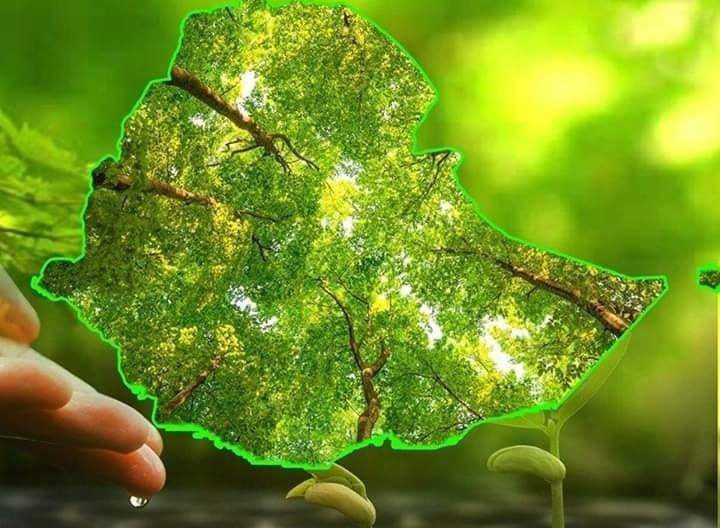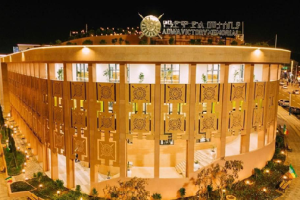
BY DARGIE KAHSAY
Following the greenery initiative of Prime Minister Abiy Ahmed (PhD) in 2019, seedling plantation has become a common practice during the rainy season in Ethiopia for the past three years now. Ethiopians are massively mobilizing to plant seedlings this rainy season.
Ethiopia plans to plant five billion trees only this single rainy season. It had planted around 10 billion trees during the past two plantation seasons. Ethiopia’s plantation goal is to increase its forest coverage from 15 percent in 2018 to 30 percent in 2030. According to Environment, Forest and Climate Change Commission (EFCCC), the forest coverage has increased from 15 to 17.5 percent. Hopes are there to achieve the goal of developing the coverage to 30 percent after 10 years.
Internalizing the green initiative campaign, currently different institutions and organizations are connecting the campaign with their sectors and investing on forest development in the areas that the sectors are engaged in.
In this regard, Ministry of Culture and Tourism is among the exemplary government organizations in connecting the greenery development with tourist destination developments as it focuses on “greening the affected tourist destination areas.”
With this motto of reforesting affected tourist destination areas, the Ministry, accountable institutions and other stakeholders are planting indigenous seedlings in different tourist destination areas. The focus of the Ministry is to preserve the sustainable ecology of the area, to maintain the attractiveness and sanitation of the destination places and to preserve the natural weather circulation, according to the Ministry.
In an exclusive interview with The Ethiopian Herald, Alemayehu Getachew, Communication Affairs Directorate with the Ministry said that tourism and green environment are inseparable. For him, though tourists have different interests for visit, natural, historical, manmade, traditional practices or other features, almost all human beings are happy to see dense forests in the areas they want to visit.
Alemayehu stated that tourism destinations are historic places, natural places, manmade or natural heritages, recreational centers, sport places and other heritages cultural, natural or manmade. What makes them common is tourist destination places’ attractiveness and beauty increases with forest coverage, he said.
Dense forest by itself is among the tourist destination places, Alemayehu said adding, at the same time, forest coverage preserves the nature, the ecology and water resources. Naturally beautiful and preserved places are the best destinations for tourists and the Ministry focuses on developing forest coverage by giving priority for affected ones.
“In general, forest coverage is a matter of life and death at this time,” Alemayehu stated “specifically for Ethiopia now, it becomes a hot agenda mainly to protect the Grand Ethiopian Renaissance Dam from unnecessary sand, to combat climate change.” “When we come to the tourism sector, forest coverage means everything,” he stated.
For Alemayehu beyond its electricity generating, GERD is expected to become the best tourist attraction potential destination for Ethiopia especially due to its manmade lake. Hence, protecting the environment and the ecology is very essential for the normal and healthy water flow of the Blue Nile (Abay) River and its tributaries. “We can do that only by planting trees,” he stated. Through this, in addition to protecting the available tourist destination areas, it helps to expand and exploit other additional new destinations to attract foreign and local tourists.
On the other side, the current attention of seedling plantation in tourist destination areas is to plant indigenous trees. Indigenous trees have smooth relations with the environment and are balancing the ecology of the area. They are helpful for preserving the nature. These species are long-lasting, smooth with the ecology, preserve the nature and help for the smooth circulation of seasons, according to him. This plays in image building of the country and for the smooth natural circulation.
Protected nature by itself attracts tourists and forces them to stay for long time, he stated. It also invites them to visit the area again and again.
Hence, protecting the ecology has a vital importance in boosting tourist flow in addition to creating healthy environment and natural resources.
Considering this in mind, Alemayehu said, the Ministry of Culture and Tourism started tree plantation in tourist destination areas across the country by mobilizing its staff, association, stakeholders and accountable institutions.
“This year’s tourism sector seedling plantation launched on July 07 in Debre Berhan area Ankober Woreda of Wof Washa (Bird’s cave), found in Amhara State of North Shewa” he reiterated. Wof Washa is among the tourist destination areas with its beautiful landscape and dense forest, but recently some of its part was affected by fire reducing the forest coverage. Hence, the campaign is to reforest the area to preserve its natural beauty. The seedlings planted there were only indigenous species adaptable with the area.
During the plantation, all staffs of the Ministry, settlers of the area, accountable institutions of the Ministry and associations, engaged in the tourism sector, did participate and thousands of seedlings were planted, according to Alemayehu.
Following the plantation launching in Wof Washa, the campaign continues in different tourist destination areas and the final plantation of the tourism sector is planned to be held in Lalibela. On 13 July, Ethiopian Theatre staffs planted seedlings in Bishoftu area of Modi Mountain, in Oromia State.
Similarly, Ethiopian Sport Commission staff members, jointly with the Ministry workers, have also joined the campaign and planted thousands of seedlings around Ziquala area of Chequala Mountains, in Oromia State, according to the director.
In addition, Hotel and Tourism Training Institute (HTTI) has also planted seedlings in Wenchi Lake area where it had planted seedlings last year. The institute and the also evaluated the growing performance of last year’s planted seedlings, he added. Wenchi is among the three selected places to develop by the initiative of Prime Minister Dr. Abiy Ahmed’s ‘Dine for Ethiopia’ projects.
National Archives and Library Agency has also a plan to plant seedlings in the newly developing tourist destination place of Koisha with the theme, “Let’s cultivate the earth with plants, our mind by books” scheduled for July 17. Koisha is also among the “Dine for Ethiopia” projects and started its development project this year.
Similarly, Authority for Research and Cultural Conservation has also a plan to plant seedlings in Gorgora area, which is also the third selected project of the “Dine for Ethiopia” to develop the beautiful area of Gorgora, in Amhara State.
The final plantation is scheduled to be held in Lalibela, he stated, which is the continuation of last year’s plantation program there. By mobilizing the settlers of Lalibela community it plans to plant thousands of trees there as Lalibela is among the top tourist destination places of the country.
According to him, last year, the Ministry launched seedling funding campaign in Lalibela for the continuous follow-up and protection of seedlings and over two million Birr was promised. The Ministry plans to develop this initiative for the development of the planted seedlings in the area and to expand the experience.
Among the best showcases during the past two consecutive years by the tourism stakeholders is the area developed by joint task of the Ministry and Ride Taxi around Gelan, in Addis Ababa area. Ride Taxi developed seven thousand hectares of land during the past two years. The area has become green and beautiful. On 19 July, there is a visiting and plantation campaign to the area. There is also a plan to expand the experience of the care of Ride Taxi to other institutions.
Now, around Gelan area, a new Irreechaa Celebration place is selected and over two thousand seedlings are reserved for transplantation, he noted. Not only these activities, directions are commanded to the grassroots to plant seedlings in tourism destination areas with due attention on the affected places.
THE ETHIOPIAN HERALD JULY 20/2021





